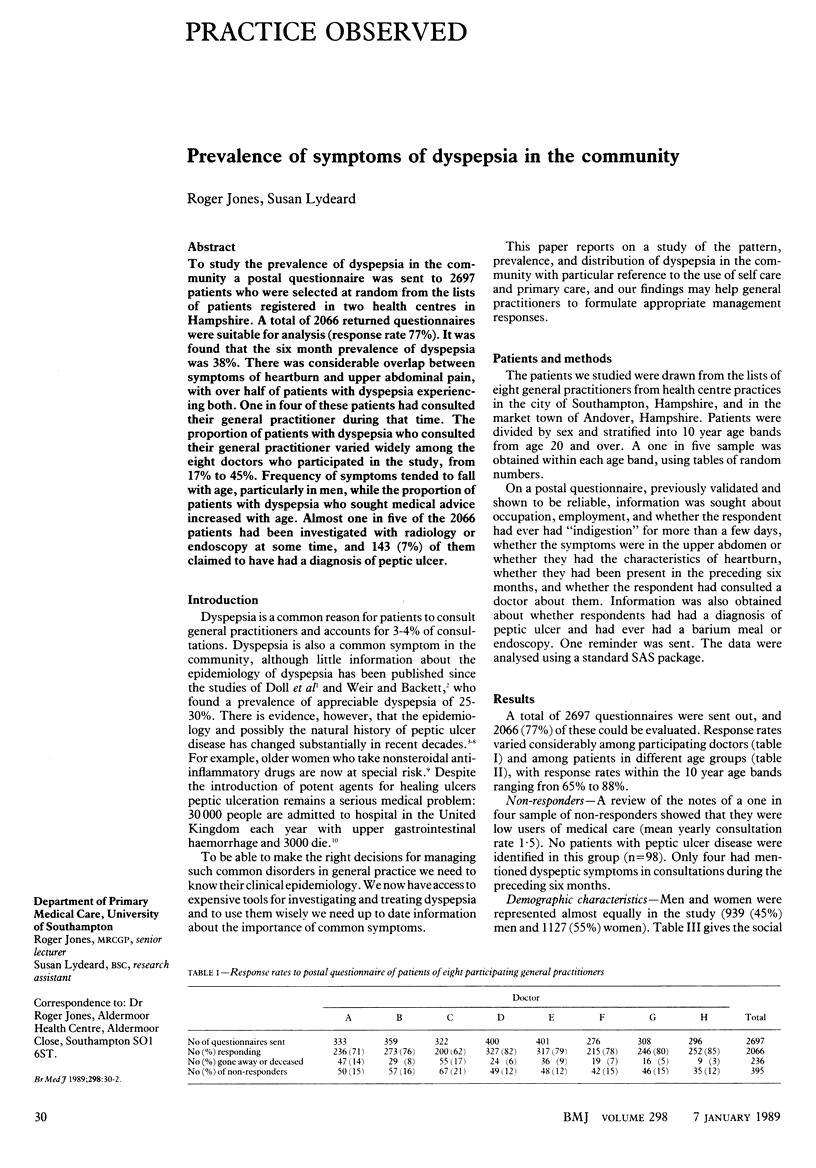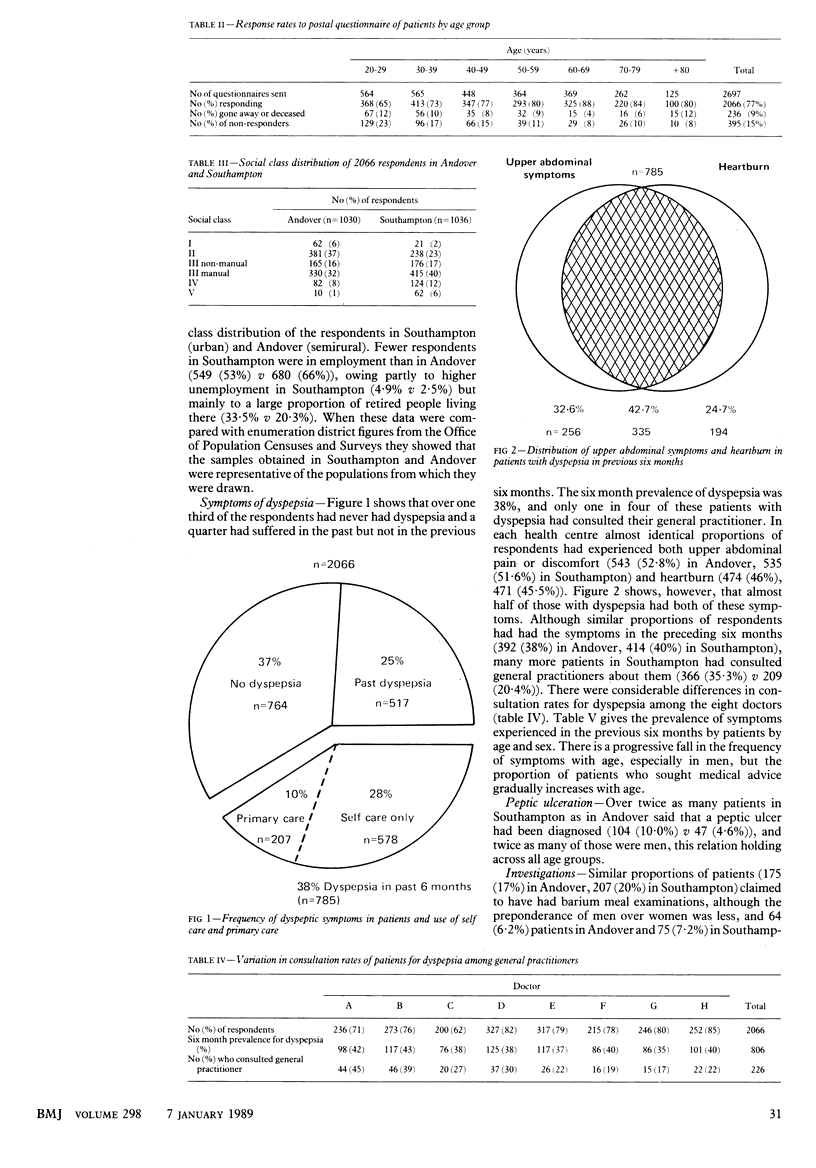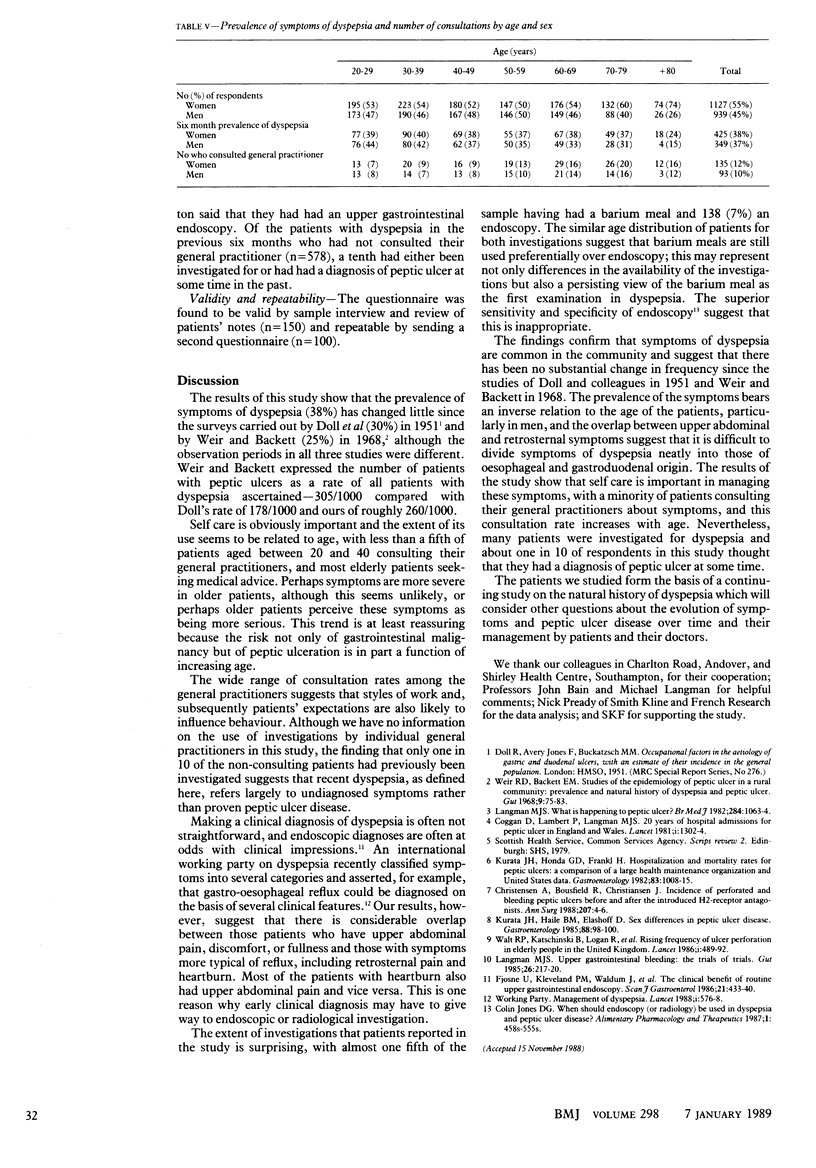Abstract
To study the prevalence of dyspepsia in the community a postal questionnaire was sent to 2697 patients who were selected at random from the lists of patients registered in two health centres in Hampshire. A total of 2066 returned questionnaires were suitable for analysis (response rate 77%). It was found that the six month prevalence of dyspepsia was 38%. There was considerable overlap between symptoms of heartburn and upper abdominal pain, with over half of patients with dyspepsia experiencing both. One in four of these patients had consulted their general practitioner during that time. The proportion of patients with dyspepsia who consulted their general practitioner varied widely among the eight doctors who participated in the study, from 17% to 45%. Frequency of symptoms tended to fall with age, particularly in men, while the proportion of patients with dyspepsia who sought medical advice increased with age. Almost one in five of the 2066 patients had been investigated with radiology or endoscopy at some time, and 143 (7%) of them claimed to have had a diagnosis of peptic ulcer.
Full text
PDF


Selected References
These references are in PubMed. This may not be the complete list of references from this article.
- Christensen A., Bousfield R., Christiansen J. Incidence of perforated and bleeding peptic ulcers before and after the introduction of H2-receptor antagonists. Ann Surg. 1988 Jan;207(1):4–6. doi: 10.1097/00000658-198801000-00002. [DOI] [PMC free article] [PubMed] [Google Scholar]
- Coggon D., Lambert P., Langman M. J. 20 years of hospital admissions for peptic ulcer in England and Wales. Lancet. 1981 Jun 13;1(8233):1302–1304. doi: 10.1016/s0140-6736(81)92470-3. [DOI] [PubMed] [Google Scholar]
- Fjøsne U., Kleveland P. M., Waldum H., Halvorsen T., Petersen H. The clinical benefit of routine upper gastrointestinal endoscopy. Scand J Gastroenterol. 1986 May;21(4):433–440. doi: 10.3109/00365528609015159. [DOI] [PubMed] [Google Scholar]
- Kurata J. H., Haile B. M., Elashoff J. D. Sex differences in peptic ulcer disease. Gastroenterology. 1985 Jan;88(1 Pt 1):96–100. doi: 10.1016/s0016-5085(85)80139-6. [DOI] [PubMed] [Google Scholar]
- Kurata J. H., Honda G. D., Frankl H. Hospitalization and mortality rates for peptic ulcers: a comparison of a large health maintenance organization and United States data. Gastroenterology. 1982 Nov;83(5):1008–1016. [PubMed] [Google Scholar]
- Langman M. J. Upper gastrointestinal bleeding: the trials of trials. Gut. 1985 Mar;26(3):217–220. doi: 10.1136/gut.26.3.217. [DOI] [PMC free article] [PubMed] [Google Scholar]
- Langman M. J. What is happening to peptic ulcer? Br Med J (Clin Res Ed) 1982 Apr 10;284(6322):1063–1064. doi: 10.1136/bmj.284.6322.1063. [DOI] [PMC free article] [PubMed] [Google Scholar]
- Walt R., Katschinski B., Logan R., Ashley J., Langman M. Rising frequency of ulcer perforation in elderly people in the United Kingdom. Lancet. 1986 Mar 1;1(8479):489–492. doi: 10.1016/s0140-6736(86)92940-5. [DOI] [PubMed] [Google Scholar]
- Weir R. D., Backett E. M. Studies of the epidemiology of peptic ulcer in a rural community: prevalence and natural history of dyspepsia and peptic ulcer. Gut. 1968 Feb;9(1):75–83. doi: 10.1136/gut.9.1.75. [DOI] [PMC free article] [PubMed] [Google Scholar]


